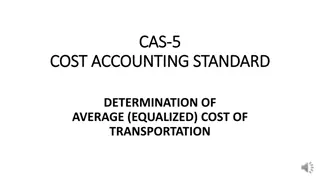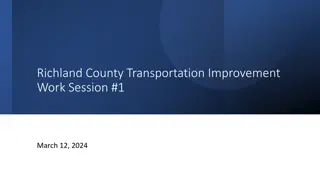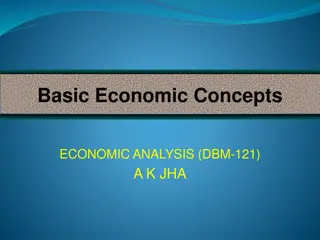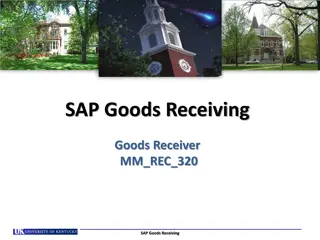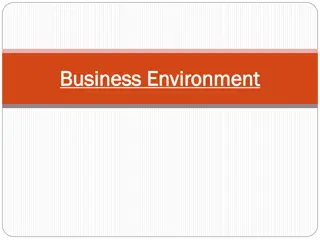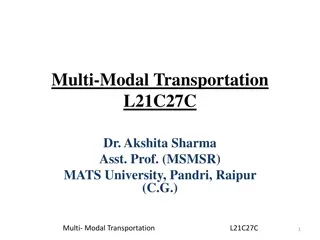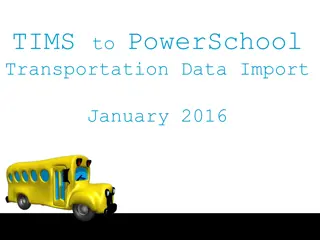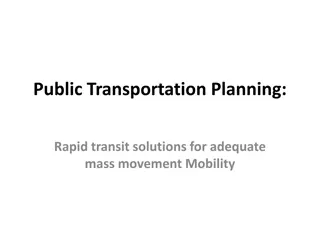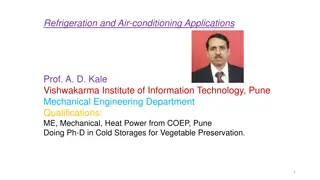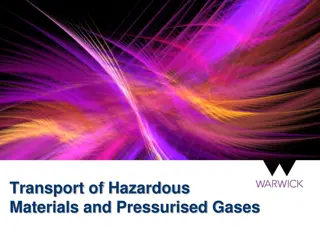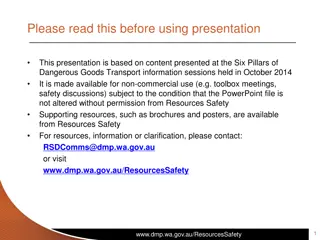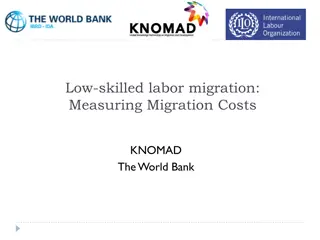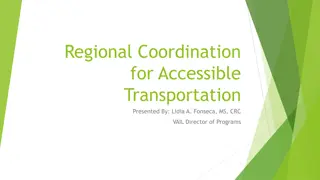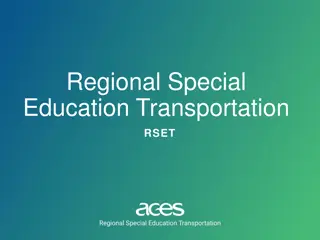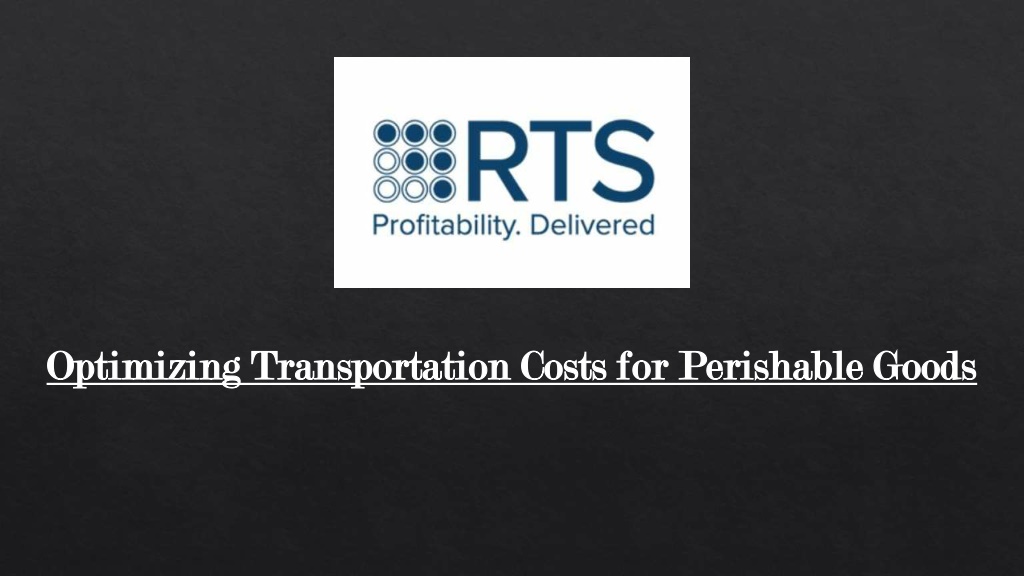
Optimizing Transportation Costs for Perishable Goods
In the realm of logistics, the transportation of perishable goods presents a unique challenge. From fresh produce to pharmaceuticals, these time-sensitive commodities require specialized handling and efficient transportation to maintain their quality and integrity. One of the critical aspects of managing perishable goods transportation is devising effective pricing models that not only cover costs but also ensure profitability for all stakeholders involved.
- cargo cloud solutions
- cargo pricing
- cargo revenue management
- cargo solutions
- cargo strategy consulting
Download Presentation

Please find below an Image/Link to download the presentation.
The content on the website is provided AS IS for your information and personal use only. It may not be sold, licensed, or shared on other websites without obtaining consent from the author. Download presentation by click this link. If you encounter any issues during the download, it is possible that the publisher has removed the file from their server.
E N D
Presentation Transcript
Optimizing Transportation Costs for Perishable Goods Optimizing Transportation Costs for Perishable Goods
In the realm of logistics, the transportation of perishable goods presents a unique challenge. From In the realm of logistics, the transportation of perishable goods presents a unique challenge. From fresh produce to pharmaceuticals, these time fresh produce to pharmaceuticals, these time- -sensitive commodities require specialized handling sensitive commodities require specialized handling and efficient transportation to maintain their quality and integrity. One of the critical aspects of and efficient transportation to maintain their quality and integrity. One of the critical aspects of managing perishable goods transportation is devising effective pricing models that not only cover managing perishable goods transportation is devising effective pricing models that not only cover costs but also ensure profitability for all stakeholders involved. This blog explores various pricing costs but also ensure profitability for all stakeholders involved. This blog explores various pricing models utilized by revenue technology services in the cargo industry, focusing on optimizing the models utilized by revenue technology services in the cargo industry, focusing on optimizing the transportation of perishable goods. transportation of perishable goods.
1. 1.Cost Cost- -Plus Pricing Model Plus Pricing Model: : The cost-plus pricing model is a straightforward approach wherein transportation providers calculate the total cost of transporting perishable goods and add a markup to determine the final price. Costs include expenses such as fuel, labor, maintenance, and overheads associated with refrigeration and specialized handling equipment. By adding a predetermined profit margin, transportation companies ensure that they cover their expenses while generating revenue. 2. 2.Dynamic Pricing Model Dynamic Pricing Model: : In the dynamic pricing model, transportation providers adjust prices in real-time based on various factors such as demand, supply chain disruptions, fuel costs, and seasonal fluctuations. This flexible approach allows for optimization of revenue by charging higher prices during peak periods of demand or when capacity is limited. Conversely, prices may be lowered during off-peak times to stimulate demand and maximize utilization of transportation resources. 3. 3.Distance Distance- -Based Pricing Model Based Pricing Model: : Distance-based pricing involves charging customers based on the distance traveled by the perishable goods during transportation. This model accounts for fuel consumption, vehicle wear and tear, and time spent on the road. Transportation providers may offer different rates depending on the distance covered, with longer distances typically commanding higher prices. Advanced route optimization technologies help minimize fuel consumption and reduce transit times, thereby optimizing costs for both the transportation provider and the customer.
4. 4.Temperature Temperature- -Controlled Pricing Model Controlled Pricing Model: : Given the sensitive nature of perishable goods, temperature-controlled transportation is essential to maintain product quality and freshness. In the temperature-controlled pricing model, transportation providers factor in the cost of maintaining specific temperature conditions throughout the journey. This includes expenses associated with refrigeration systems, temperature monitoring devices, and specialized packaging materials. Prices may vary depending on the desired temperature range and the duration of transportation, with tighter temperature tolerances commanding higher premiums. 5. 5.Value Value- -Based Pricing Based Pricing Model: of the transportation service rather than solely on costs. Transportation providers assess the importance of timely delivery, product integrity, and customer satisfaction to determine pricing. For high-value perishable goods such as pharmaceuticals or gourmet foods, customers may be willing to pay a premium for expedited shipping and superior handling practices. By aligning pricing with the perceived value of the service, transportation providers can capture additional revenue while meeting the unique needs of their customers. Model: The value-based pricing model focuses on the perceived value
In conclusion, In conclusion, pricing models for perishable goods transportation play a crucial role in pricing models for perishable goods transportation play a crucial role in balancing costs, revenue generation, and customer satisfaction. Revenue technology services balancing costs, revenue generation, and customer satisfaction. Revenue technology services leverage innovative pricing strategies such as cost leverage innovative pricing strategies such as cost- -plus, dynamic, distance controlled, and value controlled, and value- -based models to optimize transportation costs while ensuring the integrity based models to optimize transportation costs while ensuring the integrity and freshness of perishable goods. By adopting a data and freshness of perishable goods. By adopting a data- -driven approach and leveraging advanced technologies, transportation providers can navigate the complexities of technologies, transportation providers can navigate the complexities of cargo pricing exceptional value to their customers in the perishable goods industry. exceptional value to their customers in the perishable goods industry. plus, dynamic, distance- -based, temperature based, temperature- - driven approach and leveraging advanced cargo pricing and deliver and deliver
THANK YOU THANK YOU


